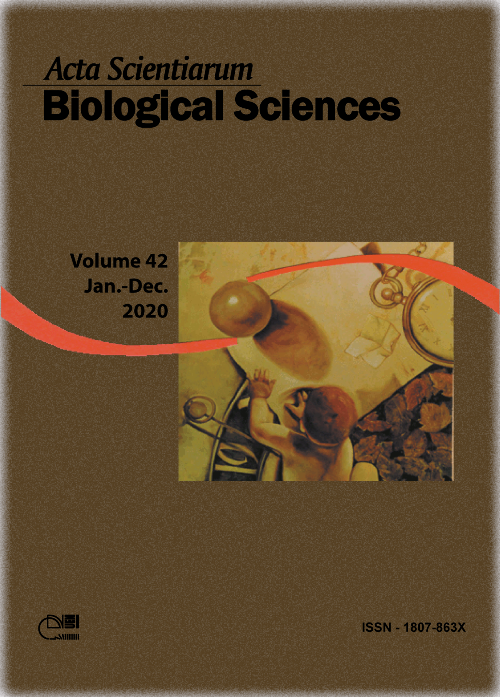Bird-plant interactions on the edge of a forest fragment in southwestern Brazilian Amazonia
Resumo
Seed dispersal is one of the principal ecological processes that determine the richness and distribution of plants in tropical forests. Birds play an important role in the zoochoric dispersal of seeds in these forests. The present study investigated the bird-plant interactions involving the ingestion and dispersal of seeds by the birds found in the edge habitat of an isolated forest fragment on the Catuaba Experimental Farm in eastern Acre, in southwestern Brazilian Amazonia. The birds were captured using mist nets, and the seeds were collected from fecal samples obtained during the handling of the animals. These seeds were sorted and identified. The bird and the plant species identified during the study were used to calculate the connectivity and nestedness of the bird-plant interactions. We captured 82 species of birds, with a total sampling effort of 203,180 h.m². Fecal samples obtained from 19 of the bird species contained a total of 2,086 seeds, representing 23 plant species. The interaction network had an intermediate connectance, and significant nestedness. Ramphocelus carbo had the highest importance index and was the bird with the largest number of plant interactions, while Cecropia latiloba was the plant with the highest importance index, followed by Schefflera morototoni. Most of the seed-dispersing birds identified in the present study are generalists found in both the forest core and its edge. The results of the study indicated that the community of generalist-frugivore birds interacts extensively with the plant community of the fragment, providing seed dispersal services that include the deforested areas adjacent to the fragment.
Downloads
DECLARAÇÃO DE ORIGINALIDADE E DIREITOS AUTORAIS
Declaro que o presente artigo é original, não tendo sido submetido à publicação em qualquer outro periódico nacional ou internacional, quer seja em parte ou em sua totalidade.
Os direitos autorais pertencem exclusivamente aos autores. Os direitos de licenciamento utilizados pelo periódico é a licença Creative Commons Attribution 4.0 (CC BY 4.0): são permitidos o compartilhamento (cópia e distribuição do material em qualqer meio ou formato) e adaptação (remix, transformação e criação de material a partir do conteúdo assim licenciado para quaisquer fins, inclusive comerciais.
Recomenda-se a leitura desse link para maiores informações sobre o tema: fornecimento de créditos e referências de forma correta, entre outros detalhes cruciais para uso adequado do material licenciado.












1.png)




3.png)













